Target Your Market
Every day of every year, hundreds of couples begin to make their dreams come true by saying the special words "I do." These couples vary greatly and in many ways—from their financial classifications and national origins, to their age specifications. In order to identify what demographic would be most productive and appropriate to target, photographers must identify their ideal markets. This classification establishes how the photographer will position him- or herself in the community in regards to pricing structure and location. The first step is to clearly define what product you want to produce, who you want to produce the product for, and how you want to promote the product.
O IDENTIFYING THE PRODUCT
We have already established that your primary objective is to target the wedding industry. However, there are different types of products to consider. For instance, wedding albums range widely in style and size. Your company may also choose to provide a variety of framing options or invitation pieces.
Selecting the types of products you want to produce is partly dependent on the type of image you decide to create. There are a wide variety of styles
THE STYLE YOU BECOME PASSIONATE °f photographic coverage, ranging from traditional to photojour-
nalistic. While a combination of all three of these styles may be
ABOUT SHOULD BE THE ONE YOU used, your market will typically associate your organization with the one you favor most. The style you become passionate about PROMOTE MOST STRONGI_Y should be the one you promote most strongly.
A good starting point for learning about the types of products offered by professional wedding photographers is to contact your local branch of the Professional Photographers of America (PPA) or the Wedding and Portrait Photographers International (WPPI). Contact them not only for additional training and education about the different products available but also to register to attend the annual conventions and trade show exhibits sponsored by these organizations. The vendors at these shows can introduce you to new products and help you select the products that will work best for your
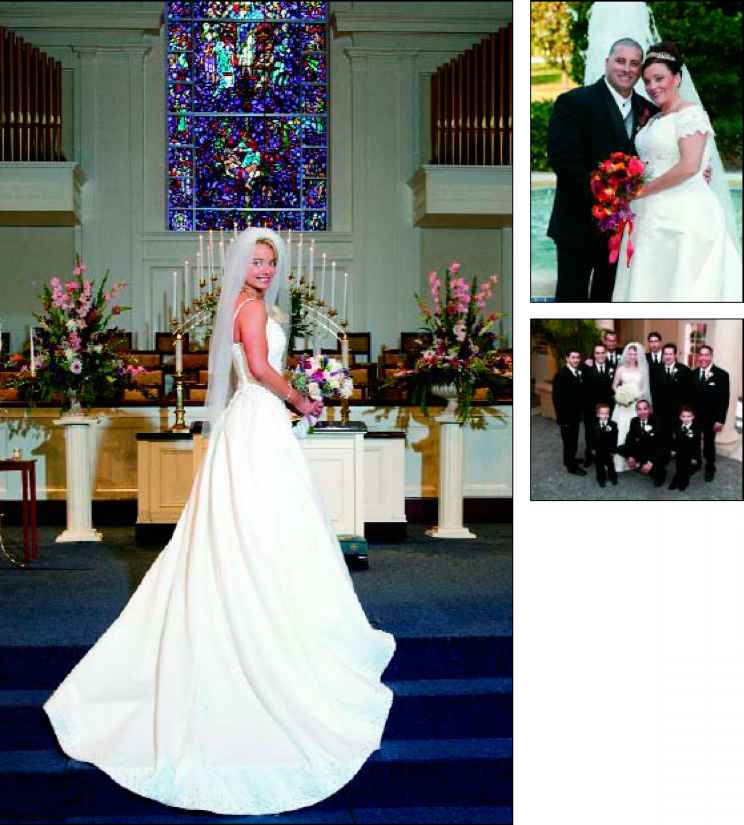
Traditional images, like those shown on this page, reflect only one of of the many styles of wedding photography you may choose to provide to your clients.

business. Having all the major vendors under one roof can make your search much easier, as well as more efficient and enjoyable.
Selecting products to sell and display must become an ongoing process and part of your long-term business plan. Keep your displays fresh, and work to eliminate any items that look dated. Even though time and money have been spent on these, each year styles and demands change greatly. Stay

Images in the photojournalistic style, like the images directly above, are extremely popular among photographers and their clients.

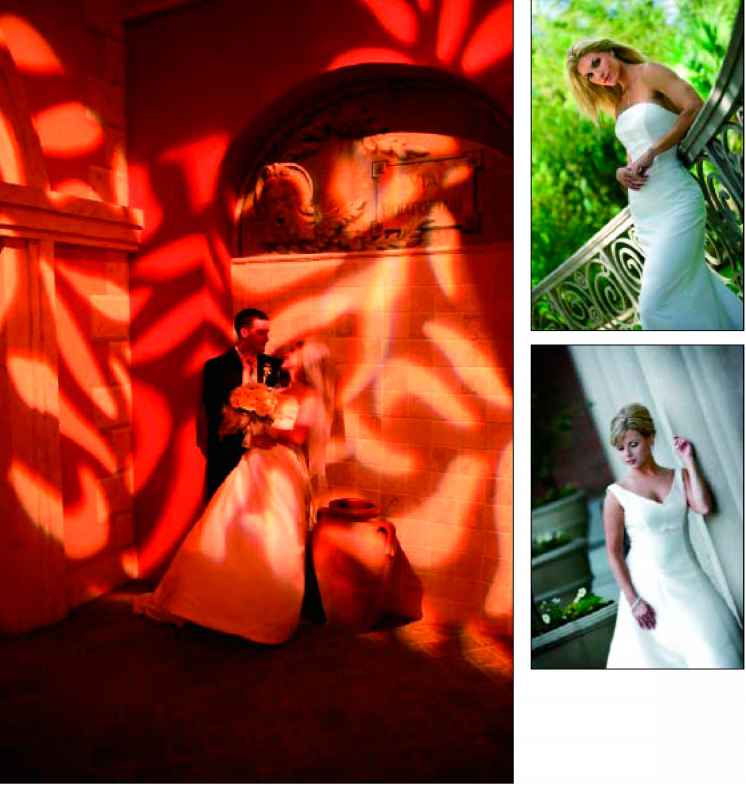
on top of the latest trends. Read bridal publications to see what they are promoting to your market, and follow their lead. Brides pay attention to these magazines and will seek out similar styles for their own weddings.
O DEFINING YOUR CLIENT
The products you ultimately select will begin to define the type of client you will attract. For example, more contemporary work, such as black & white photojournalism, often appeals more to a younger demographic. Unless
Many modern clients prefer the edgier look of photojournalism, or an offshoot of the photo movement called "faux-journalism" (thispage and opposite). Photographers working in this style capture less formal, more artistic images and often focus on the emotion of the client or specific, storytelling details of the day.
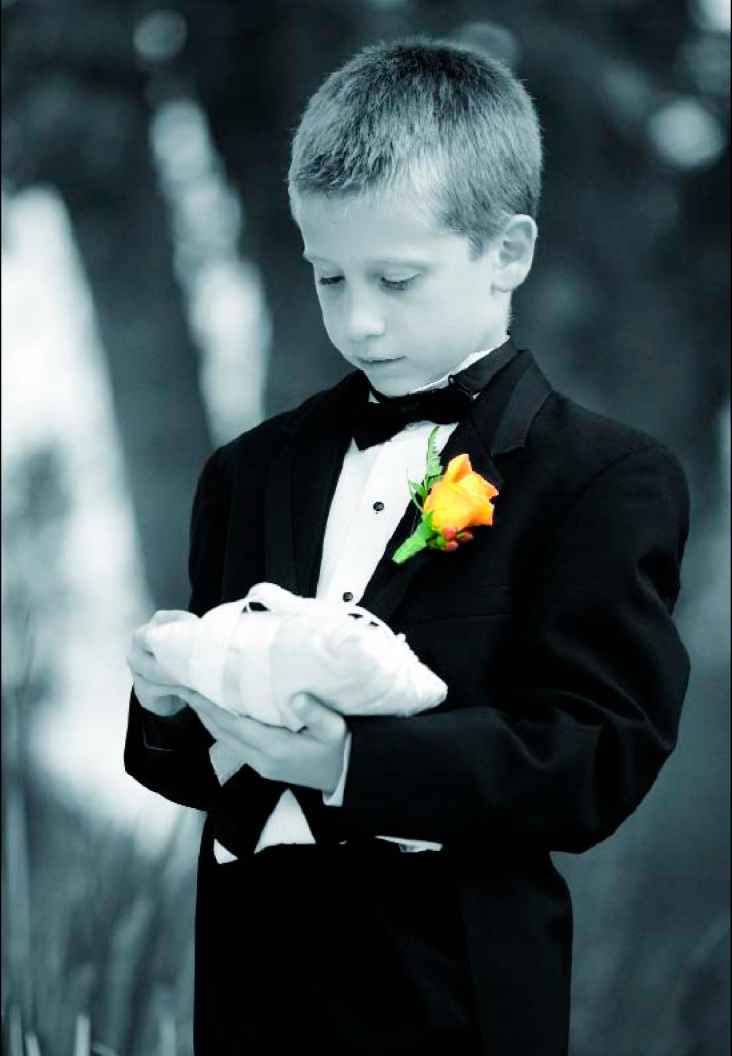

you are content to attract only a very small demographic, your product will need to be more diverse. The safest marketing route is to select not only the products that most appeal to you personally but also a selection of products and images that are designed to appeal to people with a variety of tastes. Showing the full breadth of your style and products will make doing business with you attractive to more clients, while allowing you to maintain your identity.
Keep in mind that there is no right or wrong way to establish your demographic. The choice will be based on the styles you prefer to produce, the area in which you do business, and the people you want to work with. Is your style more contemporary or traditional? Do you live in an urban center or a small seaside town?
Production volume is another area to evaluate. Many very talented photographers target the steady stream of lower-budget weddings and seek a high volume of production in this area. Some photographers choose to seek out a few very upscale weddings. Their production volume may be lower, but they achieve higher returns on each individual wedding. Other businesses fall in between the two extremes. How many weddings are you willing to photograph in a year? How much do you need to earn per wedding to meet your financial goals?
As you ask yourself these questions, compare your answers to your long-term marketing plan. Doing this will allow you to establish the client demographic that is most appropriate for your studio. This classification will determine your promotional strategies.
O BEGINNING YOUR PROMOTIONS
The types of weddings you desire to solicit and the client you wish to target will determine the most desirable location for your studio, the advertising required to attract your demographic, and the pricing position you will require to remain competitive.
High Volume, Low Budget. Photographers who choose to shoot a higher volume of lower-budget weddings will generally want to select a high-traffic, lower-cost location. Since location appeal is not as crucial to this type of client as to very upscale clients, positioning the business for visibility is more important than investing in a "prestige" address. Furthermore, photographers who seek out this demographic can also utilize smaller advertising means, such as business-card advertisements or classified advertisements. In addition, the Yellow Pages are a good means of advertising for this type of photographer, because the client is typically shopping for price, not style. This type of coverage is often very successful in "destination" wedding locations such as Hawaii, Orlando, Las Vegas, etc.
As a word of caution: new photographers often begin their business by targeting this market in order to receive name recognition and attain a target audience. However, bear in mind that it can be difficult to escape the
Reading photo publications will help you remain up to date with trends in the field. Cover reprinted courtesy of Rangefinder Publishing, Inc. Cover photograph by Yervant Zanazanian.
status and recognition you receive in this category and, through time, this high-volume workload may become very tiring and mundane.
Furthermore, even though this type of service usually requires a lower budget, photographers should never give away their work! The pricing structure you establish affects the entire photography industry and the perception of photography in general. Your pricing structure correlates with your level of competency and your self-esteem. Ultimately, the price you place on your work reflects the way you view it.
Low Volume, High Budget. Photographers who choose to target a higher-class clientele and lower volume of weddings typically need to increase their liabilities to target this market. This type of photographer has two choices regarding location: they may select to work in an upscale com-


Just because you create a commercial studio doesn't mean you can't create a homey appeal.
mercial location or in a residential gallery. Many photographers who run a residential gallery are very successful. However, if you plan to grow your photography business to include portraiture, note that portrait clients often feel more comfortable in a commercial studio location, especially when there are children involved.
In order for a photographer to target a higher-budget wedding, they must make it their number-one objective to get their images into the community. This can be done through advertising in specific wedding publications, networking with other vendors, and Internet marketing. Yellow Page advertisements are not typically a draw for this target audience.
Combination Volume and Budget. The last type of business style is the classification that falls in between these two extremes (high volume, low budget and low volume, high budget). This type of business makes up the majority of the photographic enterprises in this industry. These photographers usually examine the pricing strategies of the upscale photographers, then price their work just below theirs. They provide competitive pricing and a level of service that surpasses the quick production-line feeling of the lower-budget wedding photographers.
These businesses can utilize a combination of advertising styles and locations, depending upon which end of the spectrum they elect to target. In addition to the possibility of utilizing a commercial facility or a residential gallery, they may be able to consider other location alternatives to reduce overhead costs. A good starting point for exploring your options for this type of business is to network with other vendors in the wedding industry. Consider teaming up and sharing a facility with one of them. Alternately, consider renting out just a conference area to be used to meet with clients. While all other business can be conducted from your home, this may give you the professional presentation you need, with minimal overhead required.
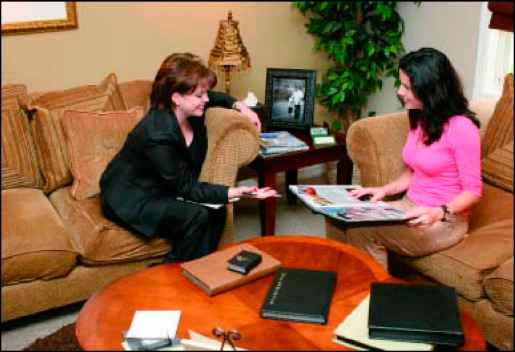
No matter the demographic you desire to attract or the type of studio you run, be sure to maintain a professional appearance and to ensure client comfort.
Residential vs. Commercial Studios
When deciding between a residential gallery and a commercial property, you should consider the following guidelines:
RESIDENTIAL GALLERY
A residential gallery is a business you run out of your home (or another home).
Do's
1. Examine the location. Typically, a subdivision is not appealing to upscale clients—unless it is extremely upscale. The residence should be located near a main road and be easy to find.
2. Rather than working your gallery into your home, select a home that fits around your gallery. Consider your business needs when buying a house.
3. Purchase a home with either a separate entrance, a mother-in-law addition, or a large enough walk-in space to give clients the impression that they have entered a professional gallery.
4. Purchase a home/gallery in a location that allows for environmental portraits (engagement sessions, family portraits, etc.).
5. Invest a portion of the revenue you are saving (by utilizing a residential gallery versus a commercial facility) on advertising to make up for the loss in exposure. Make prospective clients come to you!
Dont's
1. Set up a residential gallery if you can't keep your family separate from your business. Children and pets can be a distraction and are a turnoff to many people.
2. Allow for havoc and clutter in your gallery. Design your home to meet a level of professionalism and create a first-class impression with your clients.
3. Allow family members to answer your office line in an unprofessional manner.
4. Forget that you do not get a second chance to make a first impression. Even though you are not "going to work," your wardrobe should convey that you are a working professional.
5. Work seven days per week, twenty-four hours a day. Do not allow yourself to burn out. Establish set office hours. Your family will respect your business if you respect your family.
COMMERCIAL FACILITY
A commercial facility is typically in a mainstream business location with high visibility.
Do's
1. Plan to spend a lot of money for a first-class, professional facility.
2. Invest in elegant décor.
3. Schedule specific office hours.
4. Invest in property and liability insurance.
5. Consider how easily directions can be given, and whether traffic congestion might deter clients.
Don'ts
1. Let your family suffer long-term to maintain the caliber of your studio image. Remember why you set this goal and what your priorities are.
2. Invest money in a commercial facility for public exposure and then leave it unattended. Hire a marketing representative to maintain your professional image.
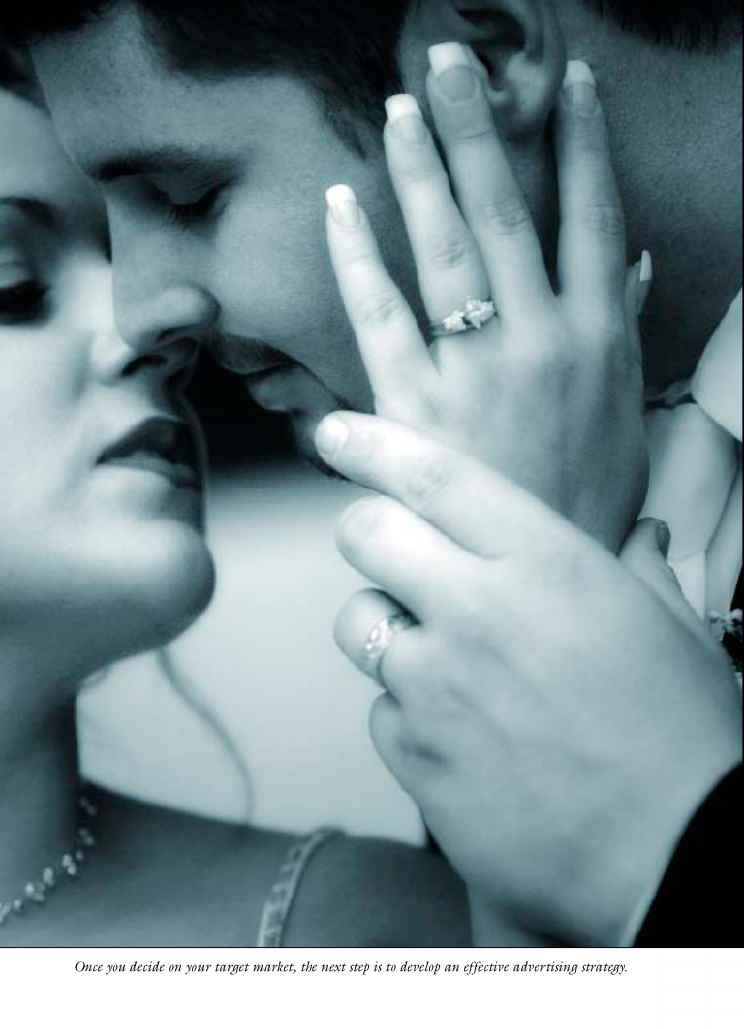
CHAPTER THREE
Was this article helpful?


